
Lysiloma watsonii var. thornberi
Feather Tree
Delicate ferny foliage is an attraction, along with a profuse spring and summer show of white to cream puffball flowers. Grow as a small tree or shrub. If damaged by frost it typically regrows rapidly into a shrubby form. Canopy coverage: 177 square feet.
[Read More]Melaleuca linariifolia
Flaxleaf Paperbark
Flaxleaf Paperbark begins as a willowy juvenile (young) tree that may require staking. With time it takes on a sturdy, umbrellalike form. Most obvious feature is the interesting white bark on the trunk that peels in flakes. Small, delicate white flowers cover the tree in summer. Canopy coverage: 314 square feet.
[Read More]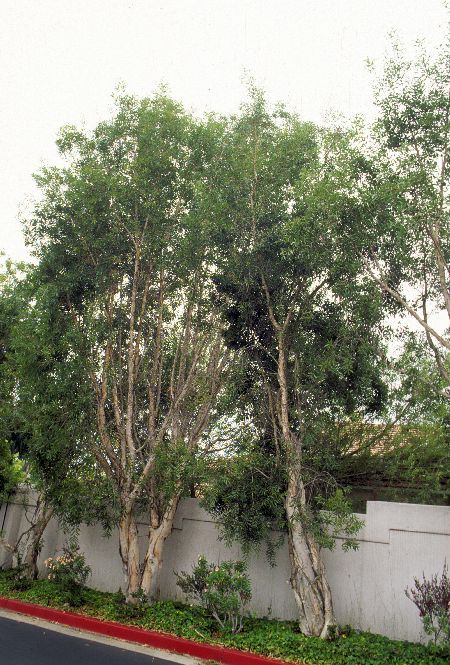
Melaleuca quinquenervia
Cajeput Tree
One of primary attractions of this Australian native is its deeply fissured, spongy bark along the trunk and major branches. Makes a slender, strongly vertical evergreen tree. Requires more moisture in hot inland and desert regions. Canopy coverage: 177 square feet.
[Read More]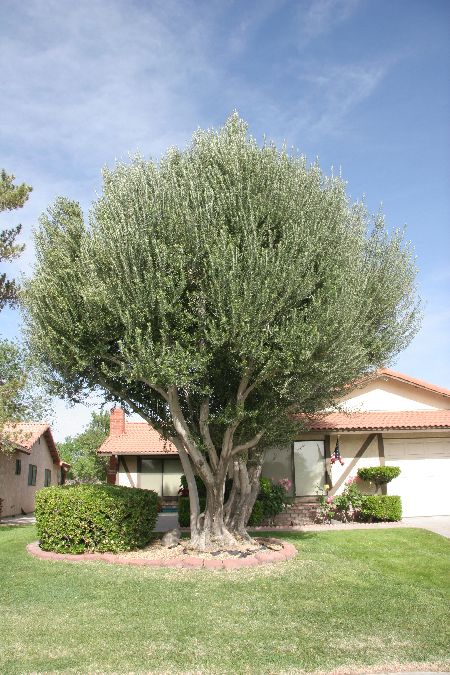
Olea europaea
Fruitless Olive
The pollen produced by Olive can cause severe allergies in some people, to the extent that purchasing Olive trees is banned in certain regions. However, pollenless selections are available. 'Swan Hill' is one of these popular selections. Also see 'Little Ollie' in Shrubs. Canopy coverage: 707 square feet.
[Read More]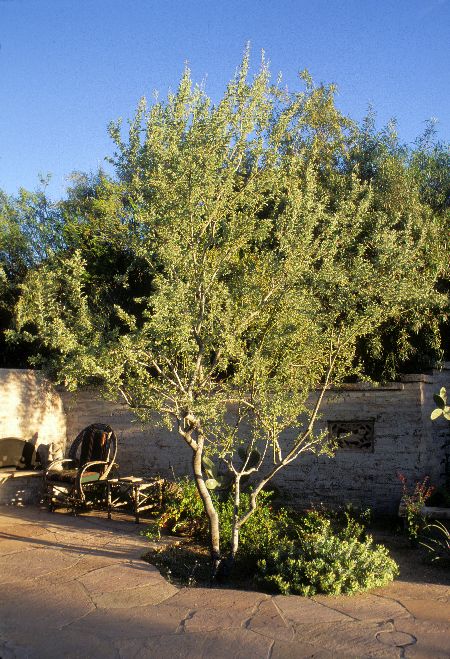
Olneya tesota
Ironwood
Ironwood is an iconic tree of the desert that gives character to the landscape. It is a quality tree that takes it time to mature but worth the wait. Branches have thorns. Flowers are small and pealike, blooming in masses. Canopy coverage: 707 square feet.
[Read More]Parkinsonia 'Desert Museum'
Hybrid Palo Verde
This Palo Verde is a thornless horticultural selection with an attractive vase shape. A popular choice. Avoid overwatering especially in summer; don't plant in lawns. Can suffer from limb breakage in high winds. Canopy coverage: 491 square feet.
[Read More]Parkinsonia florida
Blue Palo Verde
The rich yellow flowers of Blue Palo Verde become a giant bouquet of color in spring. This is an attractive tree with a vase-shaped form. Canopy coverage: 707 square feet.
[Read More]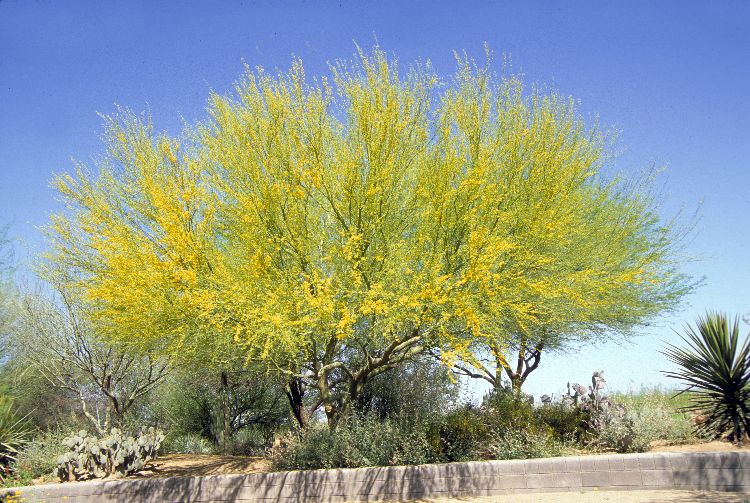
Parkinsonia microphylla
Foothills Palo Verde
Foothills Palo Verde is naturally more shrublike in form but it can be pruned to become a small tree with character. Canopy coverage: 177 square feet.
[Read More]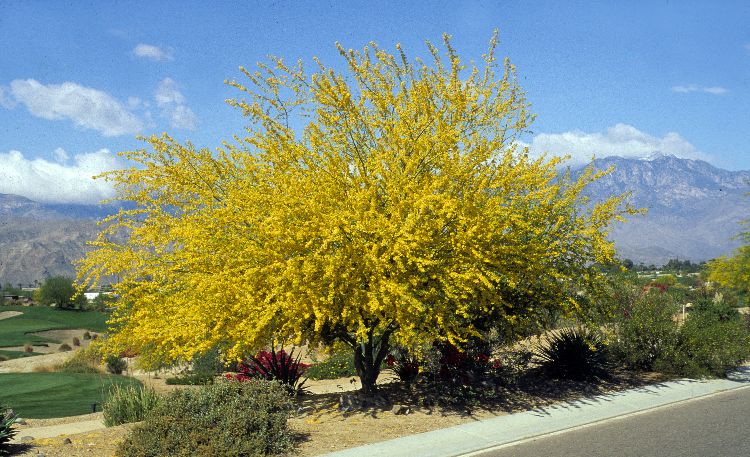
Parkinsonia praecox
Palo Brea
The curving branches of Palo Brea form an interesting structural pattern accentuated by its distinctive, lime green bark. Not quite as cold hardy as most other Palo Verdes. Canopy coverage: 491 square feet.
[Read More]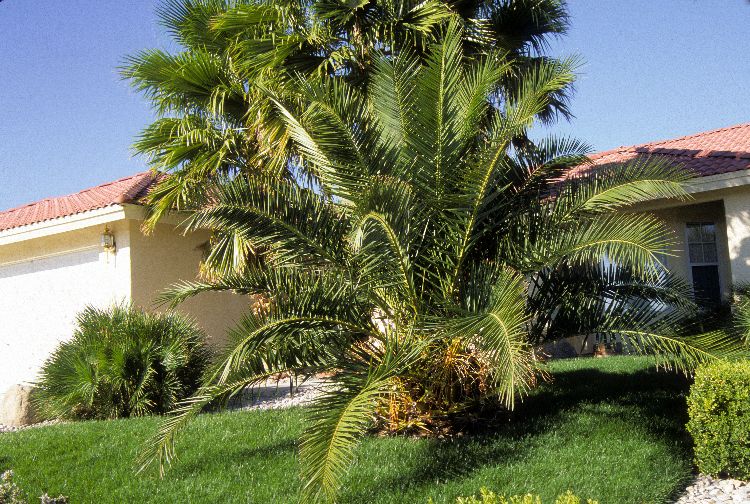
Phoenix canariensis
Canary Island Date Palm
This is a featherleaf palm with fronds reaching up to 20 feet long. Provide plants with plenty of room to grow. Fruit can be messy but are loved by birds. Canopy coverage: 707 square feet.
[Read More]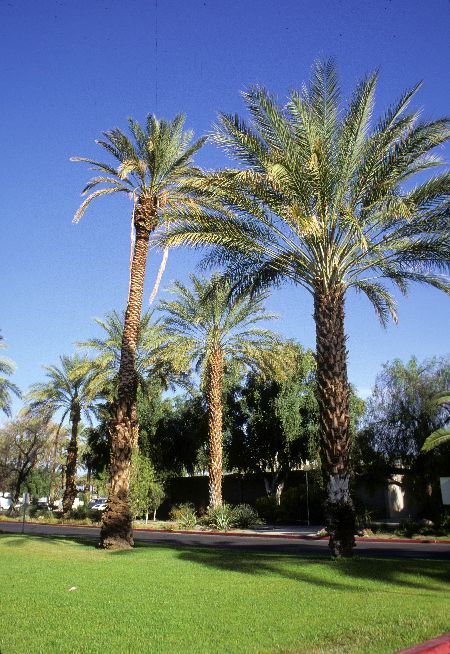
Phoenix dactylifera
Date Palm
This is the date-producing palm, grown for both its fruit and ornamental value. Tall growing, so consider it a skyline tree that needs room above. Do not plant beneath high wires. This featherleaf palm has fronds that reach up to 20 feet long so give it room to grow. Fruit can be messy but are loved by birds. Canopy coverage: 491 square feet.
[Read More]Phoenix roebelenii
Pygmy Date Palm
Pygmy Date Palm is small and refined, evoking a subtropical mood. Used often in containers or with three or more plants in a group to create a focal point. Long curving fronds grow to 8 feet long. Provide afternoon shade in hot summer regions. Will survive temperatures to 26F, but suffers damage to fronds. It also can be grown indoors with bright light. Canopy coverage: 50 square feet.
[Read More]Photinia serratifolia
Chinese Photinia
A versatile tree or perhaps more commonly grown as a large, spreading shrub. Prune to maintain desired size and form. Best with some protection from the sun in hot summer regions. New growth is light green to coppery bronze, then turns dark to medium green. Showy red berries follow spring flowers and adorn the plant for a long time. Susceptible to mildew along the coast. Canopy coverage (tree form): 707 square feet.
[Read More]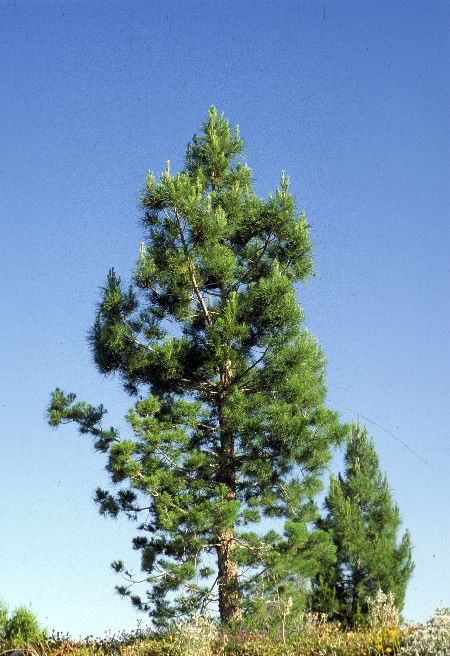
Pinus eldarica
Afghan Pine, Mondell Pine
Afghan pine is a tree with a symmetrical, pyramidal form. Brown cones 4 to 6 inches long add interest in summer. Effective and commonly used as a fast-growing windbreak. Canopy coverage: 491 square feet.
[Read More]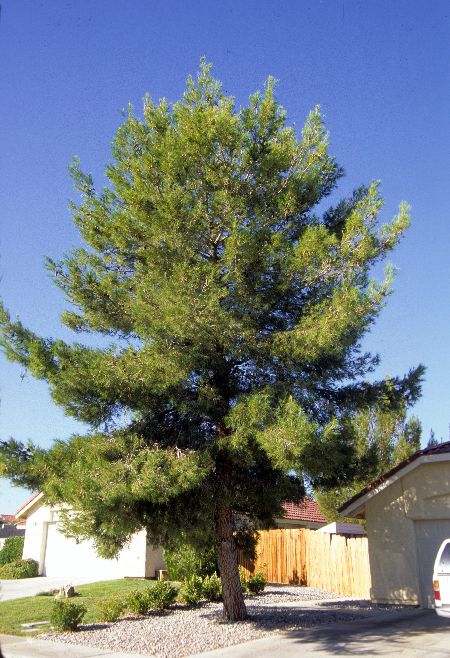
Pinus halepensis
Aleppo Pine
You can often Identify a mature Aleppo Pine due to its rounded, irregular form. Makes a nice large specimen tree. Canopy coverage: 491 square feet.
[Read More]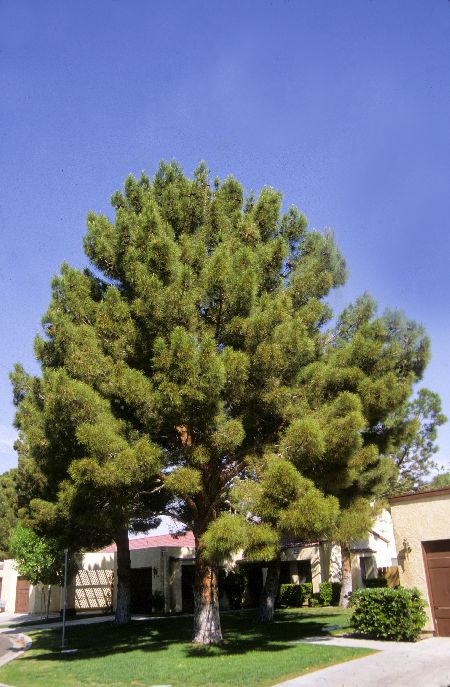
Pinus pinea
Italian Stone Pine
Stone Pine develops a flat-topped crown with age. Brown cones are ornamental in late summer. Edible nuts attract wildlife. Canopy coverage: 1,257 square feet.
[Read More]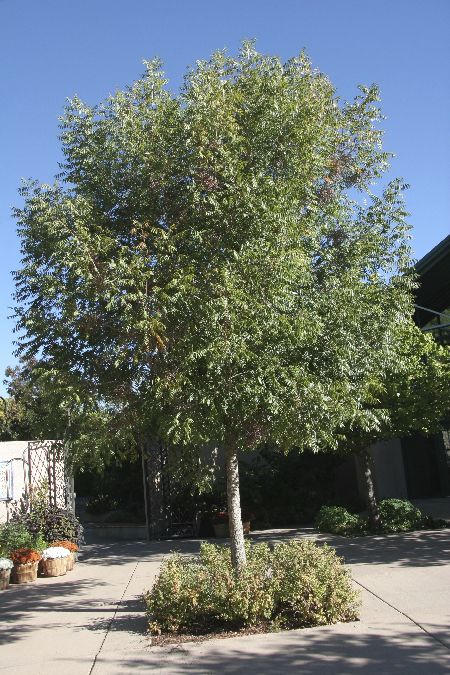
Pistacia chinensis
Chinese Pistache
Chinese Pistache is a great choice as a shade tree with the bonus of striking fall color in shades of gold and red. Canopy coverage: 962 square feet.
[Read More]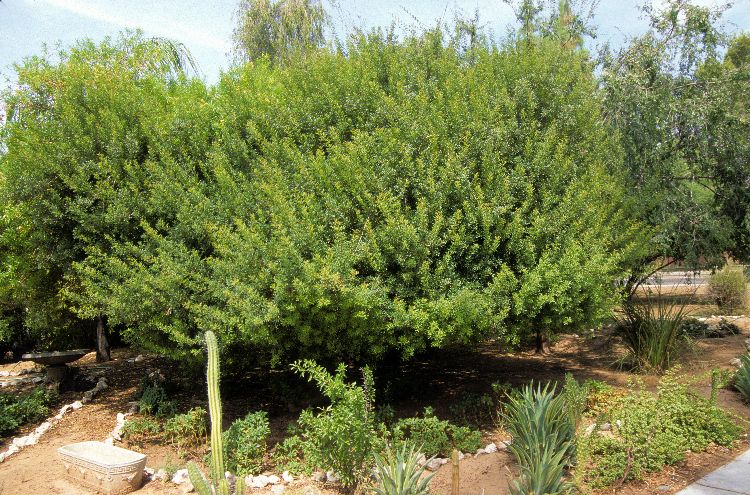
Pistacia lentiscus
Mastic Tree
Well adapted as a large shrub or screen with its wide spreading form, or train into a small tree. Canopy coverage: 314 square feet.
[Read More]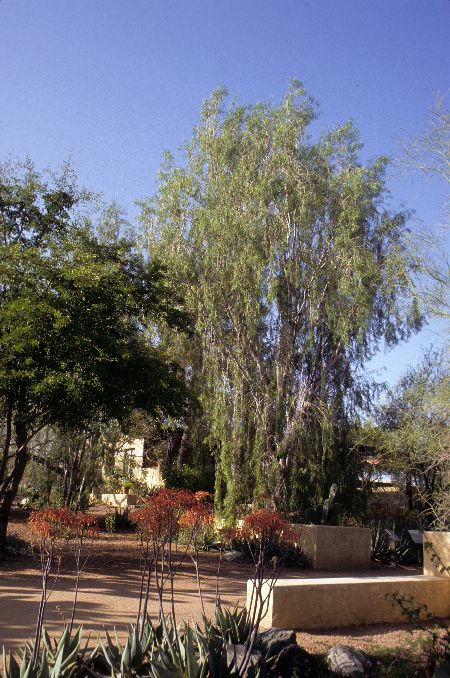
Pittosporum phillyraeoides
Willow Pittosporum
This interesting Australian native provides a unique vertical and weeping element in the landscape. The ribbonlike leaves grow up to 4 inches long. Canopy coverage: 177 square feet.
[Read More]Podocarpus henkelii
Long-leaved Yellowwood
Vertical form of Long-leaved Yellowwood makes it an excellent choice as a screen or specimen. Ribbonlike leaves up to 7 inches long curl and droop in dramatic fashion. Accepts pruning and clipping to suit a space or landscape need. Canopy coverage: 491 square feet.
[Read More]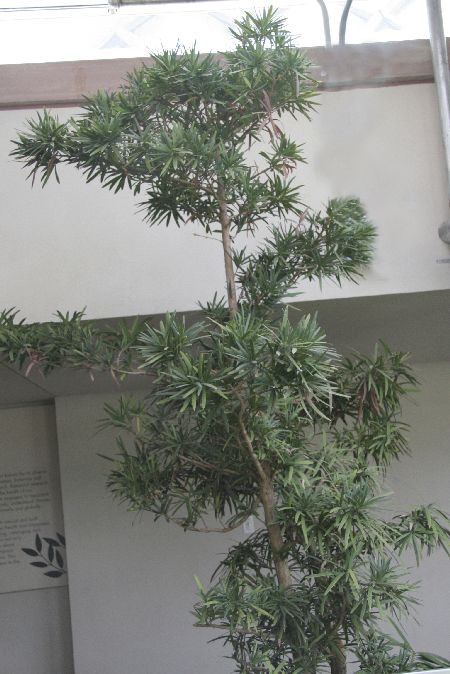
Podocarpus macrophyllus
Yew Pine, Buddhist Pine
Yew Pine is an excellent choice for narrow locations, such as against a wall or in an entryway. Accepts training as an espalier. Best with some protection from the sun in hot summer regions. Canopy coverage: 79 square feet.
[Read More]